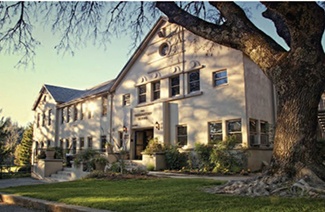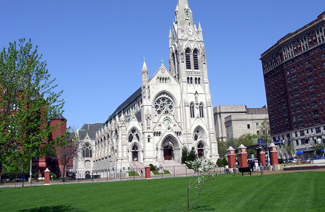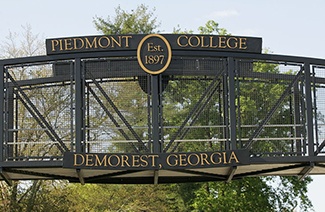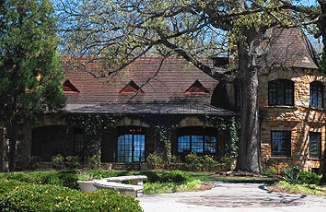阅读内容汇总!在托福备考中,很多喜欢利用往年的考试真题来进行备考。因为这些真题都是考试中出现的,这样可以帮助我们更好的理解考试的内容。对大家的复习有很大的意义。下面小编就汇总了
Passage One 学科分类:Economy
题目: England’s Economy in sixteenth century
文章原题: England’s Economy in sixteenth century In the last half of the sixteenth century England emerged as a commercial and manufacturing power in Europe due to a combination of demographic, agricultural and industrial factors. The population of England and Wales grew rapidly from about 2.5million in the 1520s to more than 3.5 million in 1580, reaching about 4.5 million in 1610.Reduced mortality rates and increased fertility, the latter probably generated by expanding work opportunities in manufacturing and farming (leading to earlier marriage and morechildren), explained this rapid rise in population. While epidemics and plagueoccasionally took their toll, the people in England still suffered less than did those in continental Europe. Furthermore, the country had been pulled out of the war that occurredin France and central Europe during the same period. England provides the prominent example of the expansion of agricultural production well before the general Europeanagricultural revolution of the eighteenth and nineteenth centuries. A larger population stimulated the increased woollen through crop civilization. English agriculture becamemore efficient and market-oriented than almost anywhere else on the continent. Between 1450 and 1640 the yield of grain per acre increased by at least thirty percent. In sharp contrast with farming in Spain, English land owners brought more dense marshes and woodlands into cultivation.
The great land estates of the English society largely remained intact and many wealthy land owners aggressively increased the size of their holdings, a precondition for increasedproductivity. Marriages between the children of landowners also increased the size of landestates. Primogeniture (the full inheritance of land by the eldest son) helped prevent land from being subdivided. Younger sons of independent land owners left the family and went to find other respective locations. Larger farms contributed more to commercialized farming at the time when an expanding population pushed up demand and prices.Farmland owners turned part of their land into pasture land for sheep in order to adapt to developing woollen trade.
Some of the great land owners as well as Yeomen (farmers whose holdings and security of land tenure guaranteed their prosperity and status), organized their holdings in the interest efficiency. Many farmers selected crops for sales in growing London market. In their quest for greater profits, many land owners put their squeeze on their tenants. Between 1580 and 1620 land lords raised rents and altered conditions of land tenure in their favor, preferring shorter phases and forcing tenants to pay an entry fee before agreeing to rent them land. Landlords evicted those who could not afford annual, more onerous terms. But they also pushed tenants toward more productive farming methods, including crop rotation. England's exceptional economic development also drew the country's natural resources,including iron, timber, and coal, extracted in far greater quantity than elsewhere in thecontinent. New industrial development expanded the production of iron and pewter in and around the city of Birmingham.
But above all textile manufacturing transformed English economy. Woolens, which accounted for eighty percent of the exports, worsteds (sturdy yarn spun from combed woolfibers), and other cloth found eager buyers in England as well as in the continent.Moreover, late in the sixteenth century as English merchants began making forays across the Atlantic these textiles were also sold in the Americas. Cloth manufacturers undercut production by urban craftspeople by "putting out" work to the villages and farms of thecountryside. In such domestic industry poor rural women could spin and make cading (combing fibers in preparation for spin) in their homes.
The English textile trade was closely tied to Antwerp, in the Spanish Netherlands, where workers dyed English cloth. The entrepreneur Sir Thomas Gresham became England's representative there. He so enhanced the reputation of English business in that region that English merchants could operate on credit---the most prominent achievement for sixteenth century. He also advised the government to explore the economic possibilities ofAmericas, which led to the first concerted efforts at colonization, undertaken withcommercial profits in mind.
Paragraph 1
In the last half of the sixteenth century England emerged as a commercial and manufacturing power in Europe due to a combination of demographic, agricultural and industrial factors. The population of England and Wales grew rapidly from about 2.5million in the 1520s to more than 3.5 million in 1580, reaching about 4.5 million in 1610.Reduced mortality rates and increased fertility, the latter probably generated by expanding work opportunities in manufacturing and farming (leading to earlier marriage and morechildren), explained this rapid rise in population. While epidemics and plagueoccasionally took their toll, the people in England still suffered less than did those in continental Europe. Furthermore, the country had been pulled out of the war that occurred in France and central Europe during the same period.
1. The word "generated" in the passage is closest in meaning to
Produced
Strengthened
followed
dominated
2. The word "furthermore" in the passage is closest in meaning to
however
in addition
similarly
in general
3. All of the following are mentioned in Paragraph 1 as developments that led to England's emergence as a commercial and manufacturing power EXCEPT
rapid population growth
an increase in the number of jobs
a trend toward earlier marriages
an end to epidemics and a plague
Paragraph 2
England provides the prominent example of the expansion of agricultural production wellbefore the general European agricultural revolution of the eighteenth and nineteenth centuries. A larger population stimulated the increased woollen through crop civilization. English agriculture became more efficient and market-oriented than almost anywhere elseon the continent. Between 1450 and 1640 the yield of grain per acre increased by at leastthirty percent. In sharp contrast with farming in Spain, English land owners brought more dense marshes and woodlands into cultivation.
4. Why does the author mention that “English land owners brought more dense marshes and woodlands into cultivation” ?
To give an example of a way in which the English increased agricultural production To emphasize the influence of English agriculture on the agriculture of other Europeancountries
To emphasize that Spanish agriculture needed to improve their farming methods
To discuss an intended consequence of crop specialization
Paragraph 3
The great land estates of the English society largely remained intact and many wealthy land owners aggressively increased the size of their holdings, a precondition for increasedproductivity. Marriages between the children of landowners also increased the size of landestates. Primogeniture (the full inheritance of land by the eldest son) helped prevent land from being subdivided. Younger sons of independent land owners left the family and went to find other respective locations. Larger farms were conducive more to commercialized farming at the time when an expanding population pushed up demand and prices.Farmland owners turned part of their land into pasture land for sheep in order to adapt to developing woollen trade.
5. The phrase "conducive to" in the passage is closest in meaning to
a result of
favorable to
able to
expanded to
6. According to paragraph 3 why did wealthy land owners increase the size of the land theyowned?
To avoid the necessity of arranged marriages between their children and the children of other land owners
To ensure that there were enough land to divide between their older and younger sons
To increase the number of goods that their farms produced
To provide more jobs for members of the colony
7. Why does the author mention that farmland owners turned part of their land into pasture land for sheep?
To explain why the younger sons of land owners had to leave the family land and find other jobs
To provide an example of a way in which large farms were eager to improve theirbusiness
To explain how the practice of primogeniture worked
To describe a strategy land owners used to give their lands from being subdivided.
以上就是为大家整理的“托福真题下载阅读内容汇总”,希望通过上述内容的练习,让大家对于托福阅读有更好的认识。小编也预祝大家能够在考试中取得更好的成绩。

















